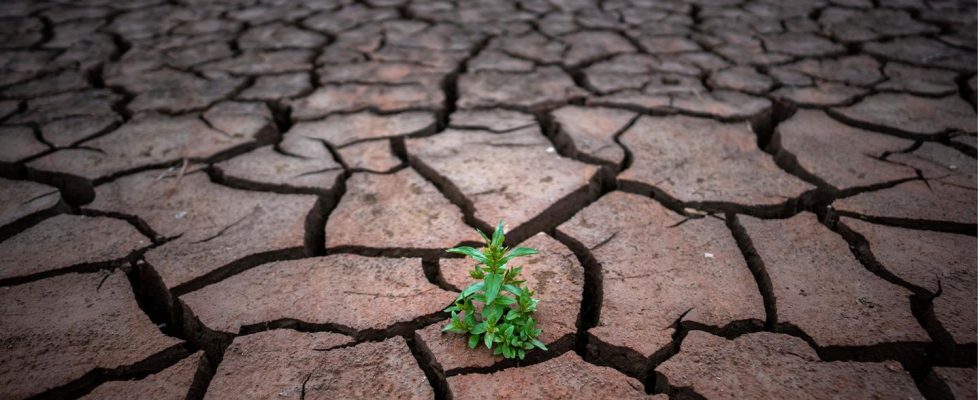global warming
UN warns 2023 to 2027 will likely be the warmest five years on record
A plant grows on cracked soil after a period of drought in Spain – many regions are already suffering from the climate catastrophe
© Emilio Morenatti/AP/DPA
The past few years have been the warmest since weather records began. The UN also dares to make an alarming forecast for the near future in terms of climate.
The years 2023 to 2027 are the most likely to be the hottest five years on record, according to the United Nations. “There is a 98 percent probability that at least one of the next five years and the entire five-year period will be the warmest on record,” the World Meteorological Organization (WMO) said on Wednesday. Global temperatures could therefore soon exceed the 1.5 degree target of the Paris climate agreement.
The warmest eight years on record were all between 2015 and 2022, but WMO forecasts temperatures will continue to rise. In addition to climate change, she also blamed the El Niño weather phenomenon, which she expects to return in the coming months.
El Niño accelerates temperature rise
El Niño occurs every two to seven years and can further increase global temperatures. The weather phenomenon is characterized by a warming of the surface water in the Pacific Ocean. It mostly causes severe droughts in Australia, Indonesia and parts of southern Asia, while causing heavier rainfall in some regions of Africa and South America, the southern United States and central Asia. El Niño last occurred in 2018 and 2019.
Before the world climate summit in Egypt
Where climate change in Germany is already clearly evident
In order to avert climate change with catastrophic consequences, the world community agreed in the Paris Climate Agreement in 2015 to limit global warming to well below two degrees, but if possible to 1.5 degrees compared to the pre-industrial age. The earth has already warmed up by more than 1.1 degrees as a result of mankind’s greenhouse gas emissions, in particular through the use of fossil fuels such as oil and natural gas.
1.5 degree limit soon exceeded
According to the WMO, there is a 66 percent probability that global warming will exceed the 1.5 degree limit agreed in the Paris climate agreement in at least one of the years 2023 to 2027. For each of these years, the WMO forecast a range of 1.1 degrees to 1.8 degrees Celsius.
This does not mean that the world will permanently exceed the Paris benchmark, explained WMO boss Petteri Taalas. However, his organization is “raising the alarm that we will temporarily and more frequently exceed the 1.5 degree limit”.
Man-made climate change is driving temperatures
Together with El Niño, man-made climate change “is likely to drive global temperatures to unprecedented heights,” said the Finn. This will have “far-reaching implications for health, food security, water management and the environment.” “We have to be prepared for it.”

